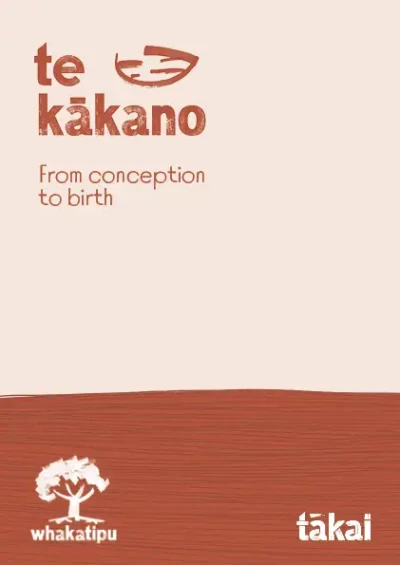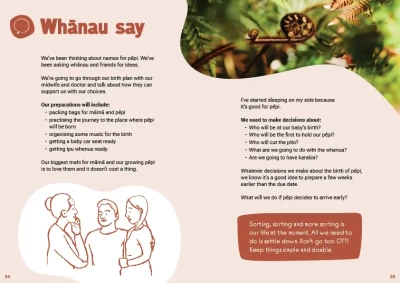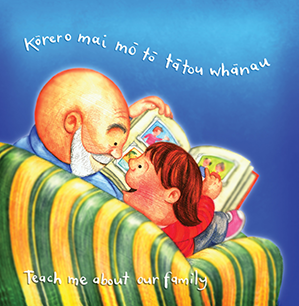
Introducing the Whakatipu booklet Te Kākano
The Whakatipu booklet 'Te Kākano' has useful information for whānau on their baby's growth and development during pregnancy.
Overview of the Whakatipu booklets
If you’ve not already introduced the booklets, explain that they’ve been written especially for all families, from a te ao Māori perspective.
There are 8 booklets in the Whakatipu set. They cover all the ages and stages of a child’s development up to 5 years old.
The following information will help you introduce the Whakatipu booklet Te Kākano to whānau.
Te Kākano
This is the first booklet in the series and is useful for anyone who's expecting a baby. 'Te Kākano' has 3 chapters, covering the 3 trimesters of pregnancy.
Te Kākano means ‘the seed’ or ‘the beginning’. That’s what’s happening now with their whānau – the beginning of a new child.
The booklet starts with a whakataukī :
Ahakoa he iti, he pounamu.
Pēpi says
Suggest to the whānau that you look at the booklet together.
- Start with where they are in the pregnancy. Find out how many weeks pregnant they are and find the relevant chapter in the booklet.
- Each chapter starts with ‘Pēpi says’. These few sentences tell us what stage of development baby is at and the main things that are happening.
- Read through ‘Pēpi says’ together, for the relevant trimester.
Ask whānau:
- Did you know this already?
- Do you want to go back to the previous chapter to check out what development has already happened?
Whānau say
The sections called ‘Whānau say’ cover some of the things parents may be wondering about. It has advice on how to look after the parents and things whānau could be doing or learning more about.
Ask whānau:
- What have you been thinking about recently?
- Have you been thinking any of the same things listed in ‘Whānau say’?
The amazing brain
Invite whānau to look for the brain development icons scattered throughout the booklet. They describe what's happening for pēpi in their hinengaro mīharo (amazing brain) and all the wonderful development going on at each stage. Read through these facts and discuss with whānau.
Other sections
Other sections have lots of interesting activities and information.
- There’s a waiata in every chapter, and whānau can listen to them on the Tākai website.
- There are sections with activities for parents that help connect them with their child. In 'Te Kākano', the activities are mostly about becoming parents and thinking about preparing for a new baby.
- There are useful tips and reminders that are relevant for each stage. In 'Te Kākano' they’re about whānau members looking after themselves – and especially māmā while she’s pregnant.
You could ask: ‘How well are you looking after yourselves?’
On pages 34–35, there are questions to get whānau thinking about the birth. This includes what they want and what they might need to prepare beforehand.
You could:
- ask if they’ve looked at any pictures or watched videos about prenatal development
- suggest they watch some of the interesting YouTube clips available on the topic.
 pdf 12 MB
pdf 12 MB












